Why Proper Attic Ventilation Is Important for Whole-House Fans
Surprising to many, whole-house fans still have a place in the home comfort realm – in particular, when they are properly matched with a homeowner’s needs, professionally installed, and routinely maintained over the ensuing years.
In this blog post, our team at Save Home Heat Company will revisit these ventilation products and briefly summarize why Denver-Boulder metro area homeowners are choosing them as a logical complement to AC systems. We’ll then focus on the important aspect of having adequate ventilation in the attic space, so that your new whole-house fan will be able to do its job to the best of its ability.
The whole-house fan product line that we’ll be focusing on as we dive a little deeper is built by QuietCool, who we have been representing for nearly a decade and continues to be a leader in modern whole-house fan design.
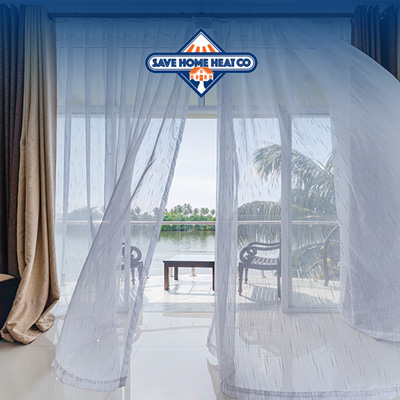
The Benefits of Whole-House Fans
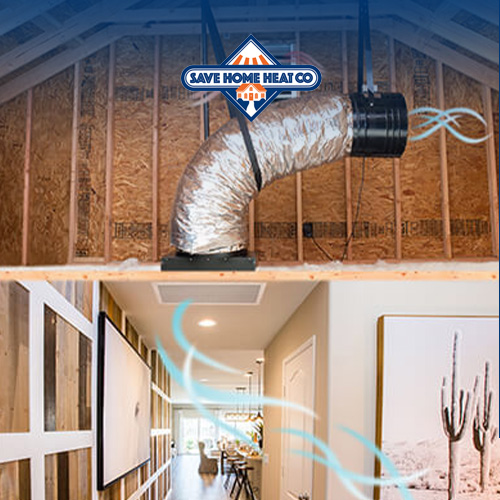
Unlike many years ago, whole-house fans are now often installed by homeowners to complement existing air conditioners, helping to control cooling bills by pulling fresh, cooler outside air into the home when outdoor temperatures allow – typically after the sun has gone down.
Technically speaking, whole-house fans are not a cooling system. Rather, they operate by exhausting warm indoor air to the outdoors thru the attic space while bringing outside air into the home thru open windows. If the outdoor temperature is cool enough, then the effect will feel like a cooling system.
Advantages of Whole-House Fans:
- Reduces use of central AC or other air conditioners, saving on electric bills
- Extends the lifespan of your air conditioning system thru reduced use
- Exhausts stale indoor air, odors, and indoor air pollutants to the outdoors
- Removes excess heat from the attic that may have accumulated there during the day, reducing cooling load on the home
- Introduces fresh outdoor air into the home while operating (Outdoor allergy sufferers & those located close to high traffic areas: These products are not a good solution for you!)

How Much Attic Ventilation Do You Need for a Whole-House Fan?
According to the U.S. Department of Energy (DOE) and other trusted sources, in order to properly handle the amount of indoor air being pulled into the attic by the fan, for every 750 CFM of rated size of a whole-house fan, there should be at least 1 square foot of “free vent area” in the attic space venting to the outdoors. For example, a 3,000 CFM whole-house fan requires a minimum of 4 square feet of free venting in the attic (3,000 divided by 750).
Defining Free Vent Area
Determining free vent area in the attic involves measuring all of the existing passive vents in the attic space (roof vents, gable end vents, soffit grilles, ridge vents, etc.), determining their total combined square footage, and then deducting 25% from that number to account for air restrictions through the vents. For example, if the total combined, measured square footage of all the vents in the attic totals 12 square feet, then the equivalent free vent area of those existing vents would be 9 square feet (12 less 25%).
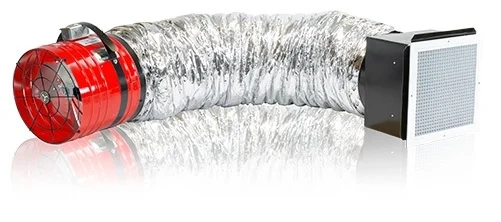
The total free vent area of your attic vents is a crucial number when matching the needs of your whole-house fan with the ability of the attic to exhaust the amount of indoor air being pulled in there. This number determines if additional venting will need to be added to the attic at the time the fan is installed.
Adding Supplemental Ventilation: What You Need to Know
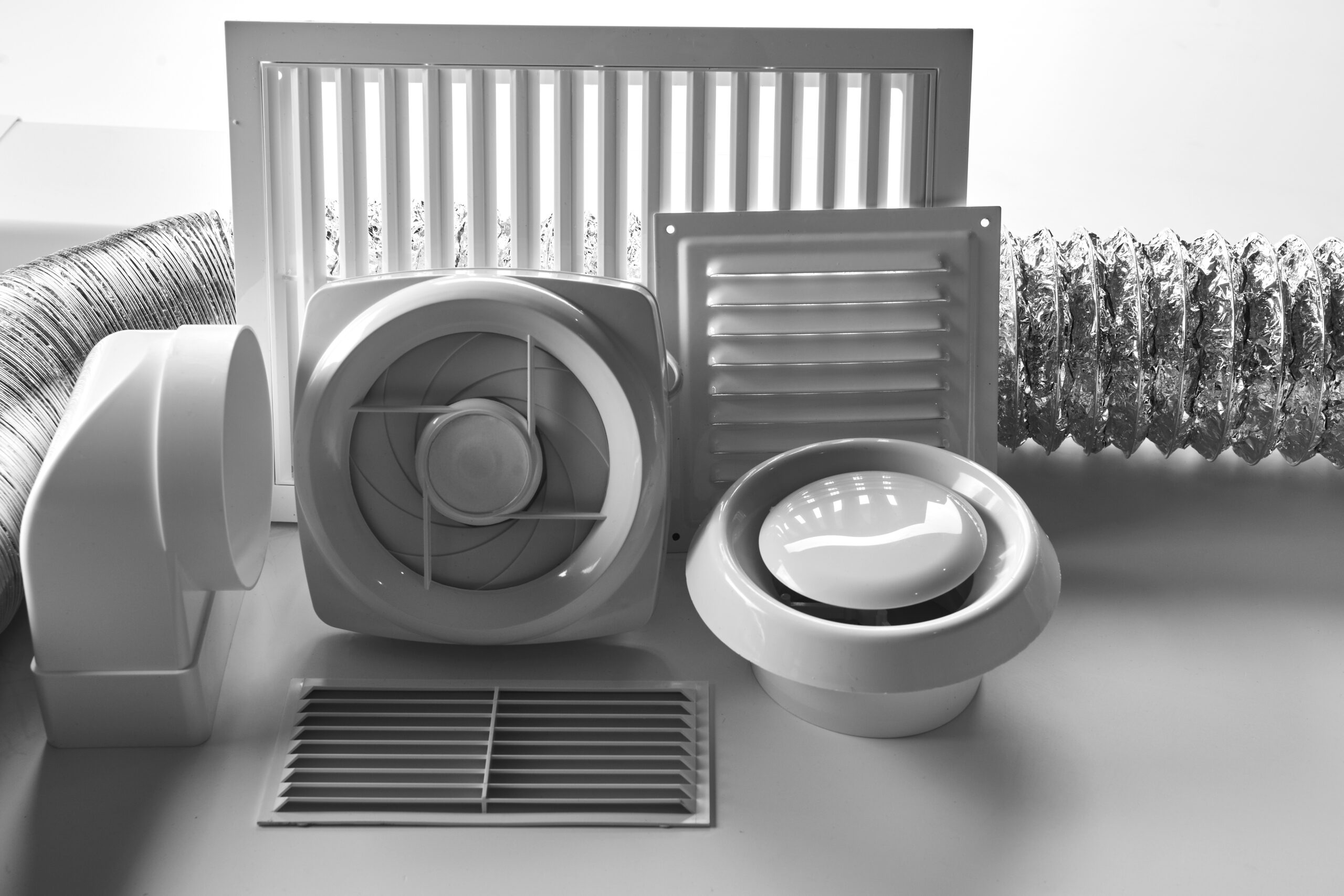
Our team has found that in many homes we work in around the Denver-Boulder metro area there is sufficient existing venting in the attic to accommodate a properly sized, new whole-house fan. It’s typically in older homes where there’s more potential for concern in this area. In cases where additional venting is needed, that can be addressed in a variety of ways, usually and most easily by adding more passive vents. On occasion, we install a product such as a solar-powered attic ventilator to help solve a variety of issues, as well as assist the performance of a whole-house fan.
In those cases where more attic ventilation is needed, our team often adds additional soffit grilles to the underside of the roof eaves. But that’s not always the case; each installation we perform is looked at very closely during the planning process. Common passive venting products include soffit grilles, round or square roof vents, and gable end vents.
Our Recommended Whole-House Fan for Boulder-Denver Area Homes: QuietCool

QuietCool brand whole-house fans offer high electrical efficiency, quiet operation, and installation versatility, making them a good fit for many of the attics we come across while serving our customers in the Boulder-Denver area.
The seven different sizes of QuietCool whole-house fans available range in fan ratings from approximately 1,500 CFM (single room or small area applications) to 7,000 CFM (homes over 3,000 square feet), suiting a wide range of residential applications. The two smallest units have 2-speed fans, and the five larger models have 3-speed fans. The largest unit requires over 9 square feet of free vent area in the attic, and the smallest unit needs only 2 square feet of free venting. As mentioned above, most homes we work in do not require additional attic venting, and if they do, the modifications are usually relatively minor. Older homes, of course, may be another case, which is often easily dealt with.
When’s The Best Time to Install a Whole-House Fan?

If you’re considering having a whole-house fan installed in your home, be aware that there are times of year when it’s best to have this work performed. Such as springtime, before the attic gets too hot to work in safely – also, it’s right before the time of year when the fan will provide greatest value for you! In the heat of mid-summer, we often don’t allow our crews to enter hot attics that may put them at jeopardy. In addition, if we need to get up on the roof, it’s best to stay off of there during hot weather; potential damage to roofing material being a concern.
Summer days when it will actually be cool enough outdoors to pull this feat off are too hard to predict in advance, and while the fall is ok, you’re not going to get much use from your new system before it’s time to wait for next year.
Denver-Boulder Expert Whole-House Fan Installation
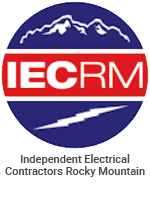 Save Home Heat Company offers expert guidance and top-tier experience for all of your home comfort needs. Whether you’re considering installing a new whole-house fan, or you’re still figuring out which cooling options are best for your home, Denver-Boulder metro area homeowners can count on our team providing you with ample amounts of information and answering all your questions in a friendly, low-pressure manner. Our goal is to help you find home comfort solutions that make the most sense for you, and which you’ll be pleased with for many years to come.
Save Home Heat Company offers expert guidance and top-tier experience for all of your home comfort needs. Whether you’re considering installing a new whole-house fan, or you’re still figuring out which cooling options are best for your home, Denver-Boulder metro area homeowners can count on our team providing you with ample amounts of information and answering all your questions in a friendly, low-pressure manner. Our goal is to help you find home comfort solutions that make the most sense for you, and which you’ll be pleased with for many years to come.
To learn more about cooling options for your Denver-Boulder area home, please reach out to our team today.
Please contact me to talk about whole-house fans and my cooling needs!





